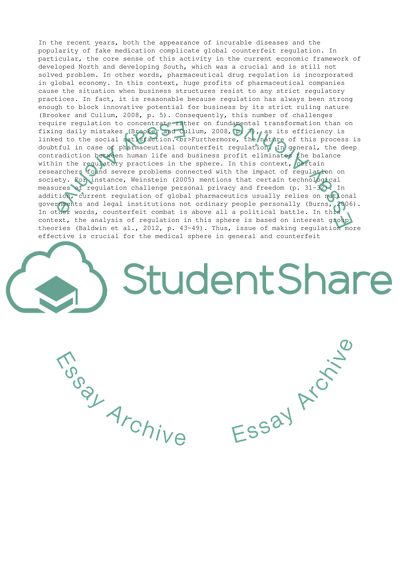Cite this document
(The Direct Impact of Counterfeit Drugs on Human Life Essay Example | Topics and Well Written Essays - 2750 words, n.d.)
The Direct Impact of Counterfeit Drugs on Human Life Essay Example | Topics and Well Written Essays - 2750 words. https://studentshare.org/business/1676864-the-direct-impact-of-counterfeit-drugs-on-human-life
The Direct Impact of Counterfeit Drugs on Human Life Essay Example | Topics and Well Written Essays - 2750 words. https://studentshare.org/business/1676864-the-direct-impact-of-counterfeit-drugs-on-human-life
(The Direct Impact of Counterfeit Drugs on Human Life Essay Example | Topics and Well Written Essays - 2750 Words)
The Direct Impact of Counterfeit Drugs on Human Life Essay Example | Topics and Well Written Essays - 2750 Words. https://studentshare.org/business/1676864-the-direct-impact-of-counterfeit-drugs-on-human-life.
The Direct Impact of Counterfeit Drugs on Human Life Essay Example | Topics and Well Written Essays - 2750 Words. https://studentshare.org/business/1676864-the-direct-impact-of-counterfeit-drugs-on-human-life.
“The Direct Impact of Counterfeit Drugs on Human Life Essay Example | Topics and Well Written Essays - 2750 Words”. https://studentshare.org/business/1676864-the-direct-impact-of-counterfeit-drugs-on-human-life.


